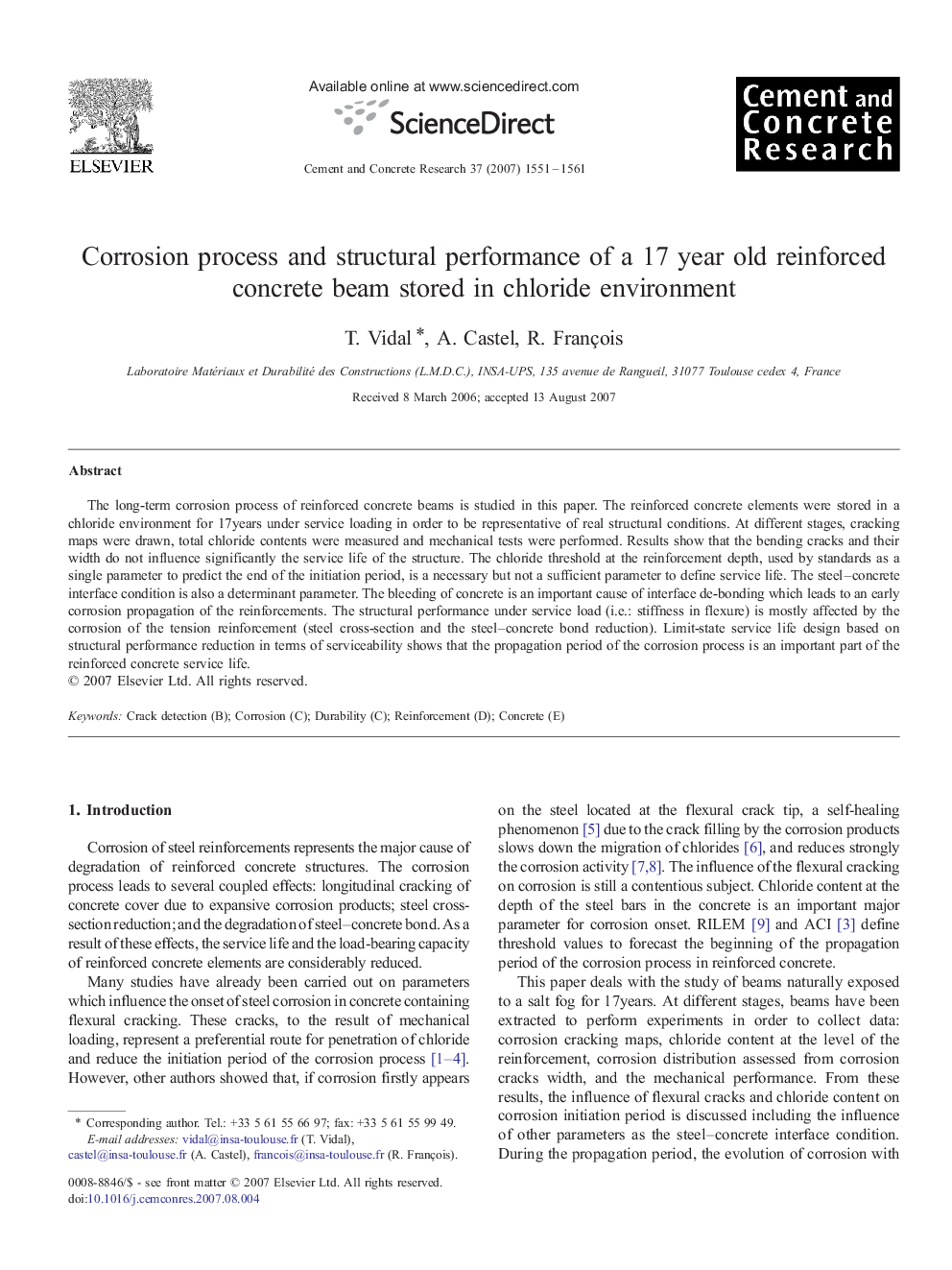| Article ID | Journal | Published Year | Pages | File Type |
|---|---|---|---|---|
| 1457772 | Cement and Concrete Research | 2007 | 11 Pages |
The long-term corrosion process of reinforced concrete beams is studied in this paper. The reinforced concrete elements were stored in a chloride environment for 17years under service loading in order to be representative of real structural conditions. At different stages, cracking maps were drawn, total chloride contents were measured and mechanical tests were performed. Results show that the bending cracks and their width do not influence significantly the service life of the structure. The chloride threshold at the reinforcement depth, used by standards as a single parameter to predict the end of the initiation period, is a necessary but not a sufficient parameter to define service life. The steel–concrete interface condition is also a determinant parameter. The bleeding of concrete is an important cause of interface de-bonding which leads to an early corrosion propagation of the reinforcements. The structural performance under service load (i.e.: stiffness in flexure) is mostly affected by the corrosion of the tension reinforcement (steel cross-section and the steel–concrete bond reduction). Limit-state service life design based on structural performance reduction in terms of serviceability shows that the propagation period of the corrosion process is an important part of the reinforced concrete service life.
